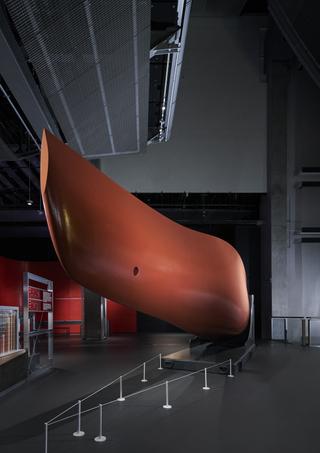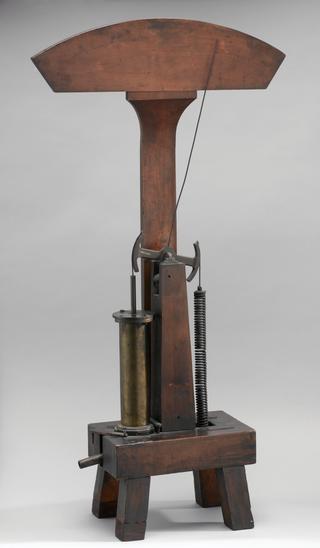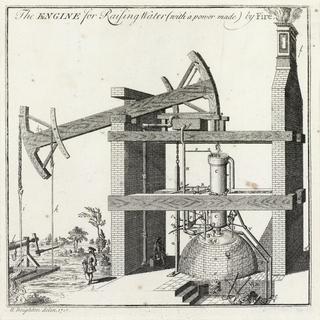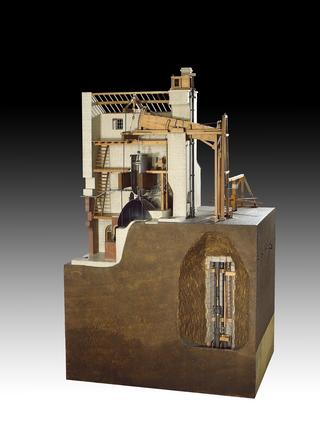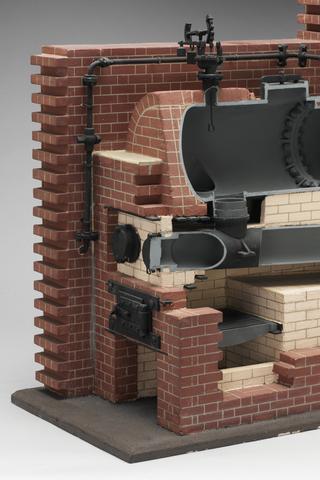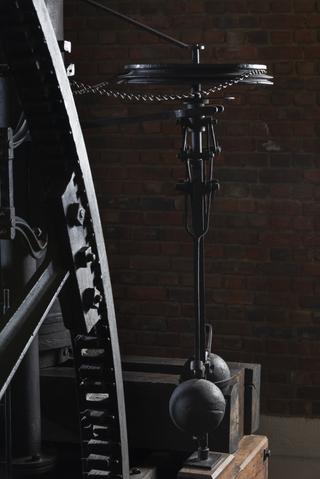
Working model of Rotary Engine
- Made:
- 1818
- patentee:
- Joshua Routledge
Working model of Rotary Engine patented by J. Routledge in 1818. Mounted on cast iron tank
This is a model of a simple form of rotary engine made and patented in 1818 by Joshua Routledge, whose name is best known in connection with developing the engineers' slide rule for calculating purposes. The piston revolves on a shaft passing through the centre of the cylinder casing. The flap or valve hinged to the casing, with its free end resting upon the piston, acts like the bottom of an ordinary engine cylinder. The steam inlet port is on one side of the hinge, and the exhaust port on the other. The admission of steam is controlled by a slide valve, actuated by an eccentric on the flywheel shaft, so that the engine could work expansively, and the steam pressure resisting the lifting of the flap would also be greatly reduced, so diminishing the knock at this point, which, however, would always be a serious cause of trouble. The exhaust steam passes down to a jet condenser, provided with a supply of water from a containing tank, from which the injection is admitted through a regulating valve. The air pump which draws the air and water from the condenser and discharges them through a pipe passing out at the end of the tank, is a rotary machine constructed like the engine driven by spur gearing from the flywheel shaft. Some efforts to prevent leakage have been made by forming grooves in the side of the revolving piston and filling them with soft packing.
